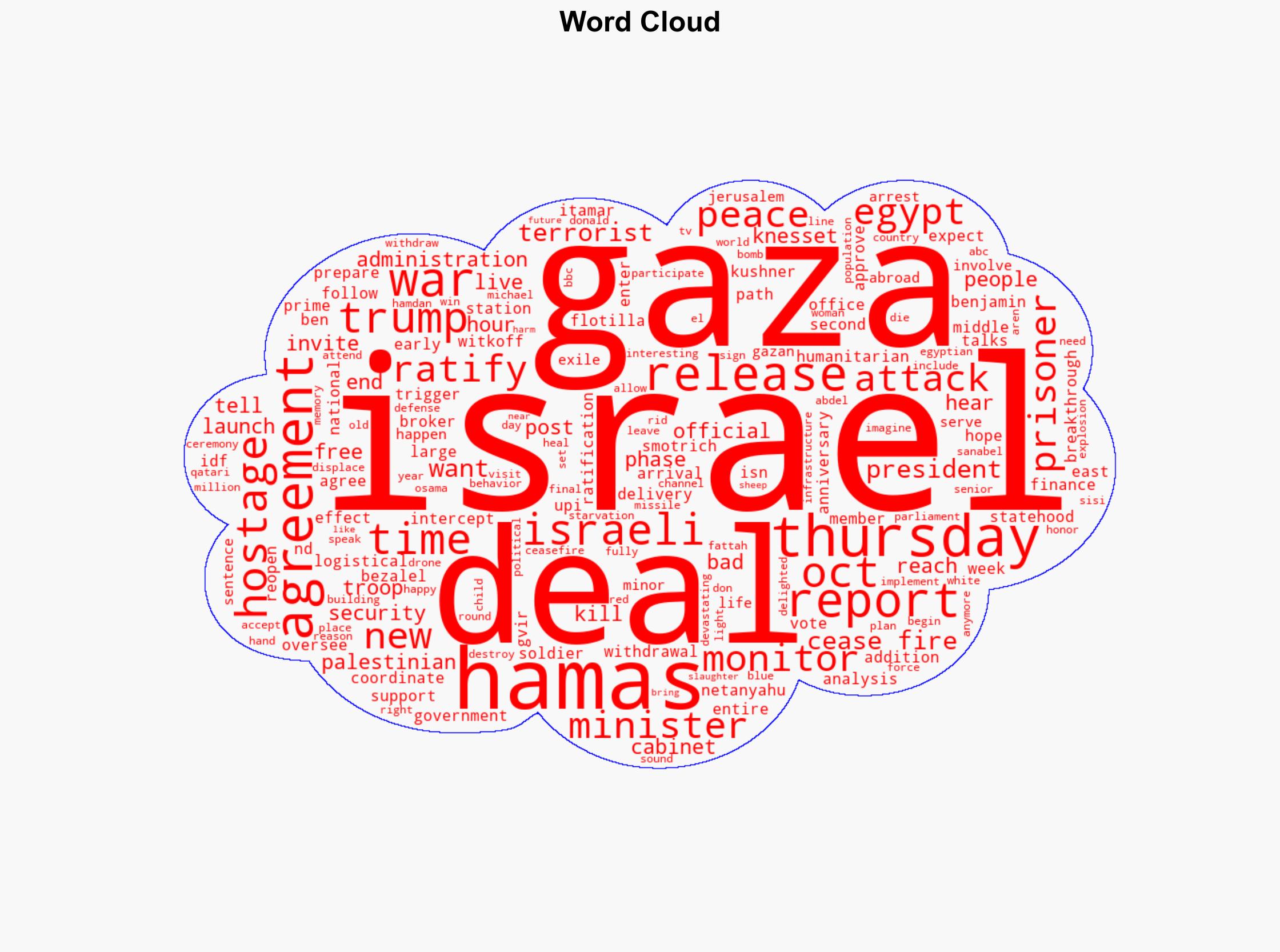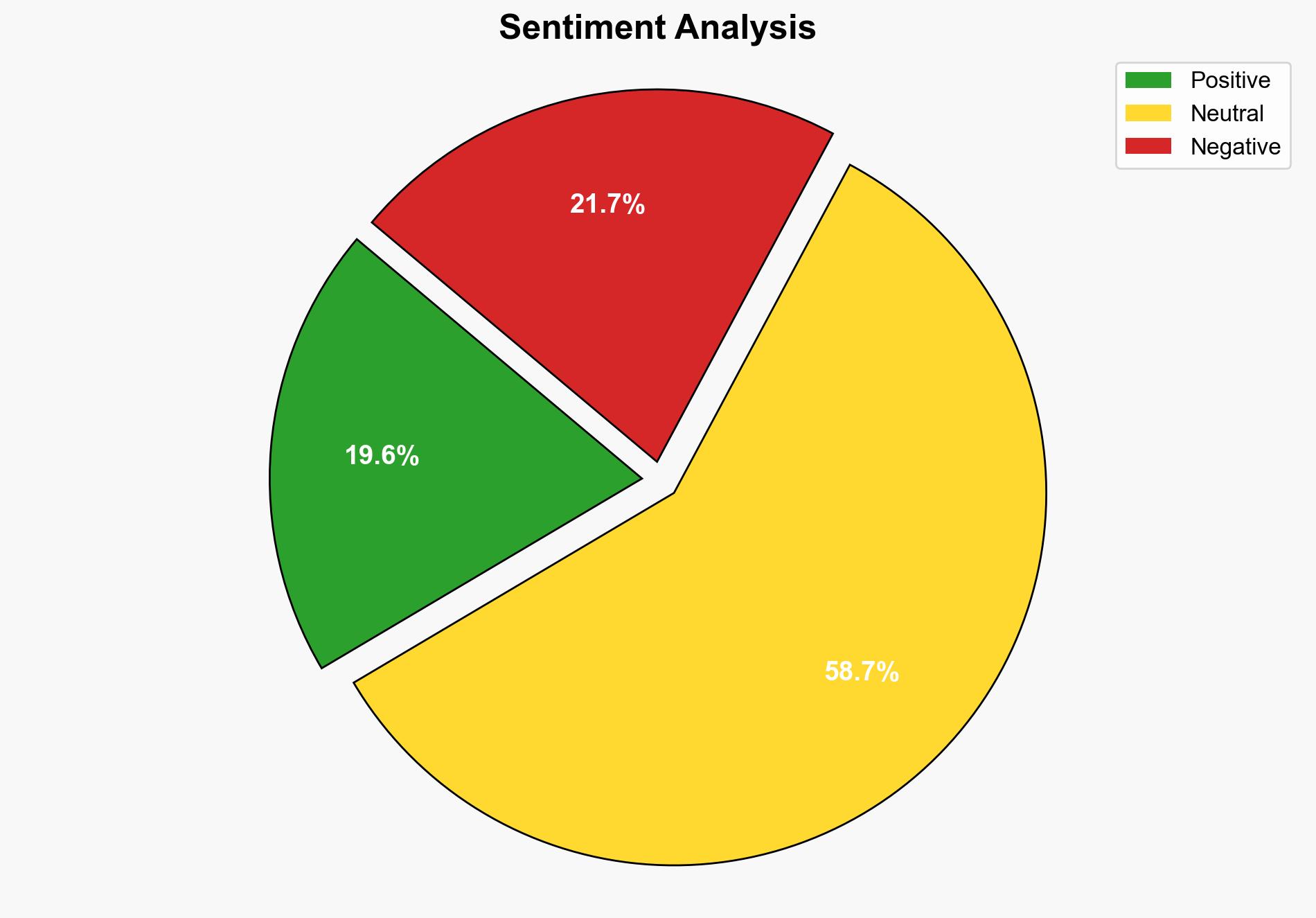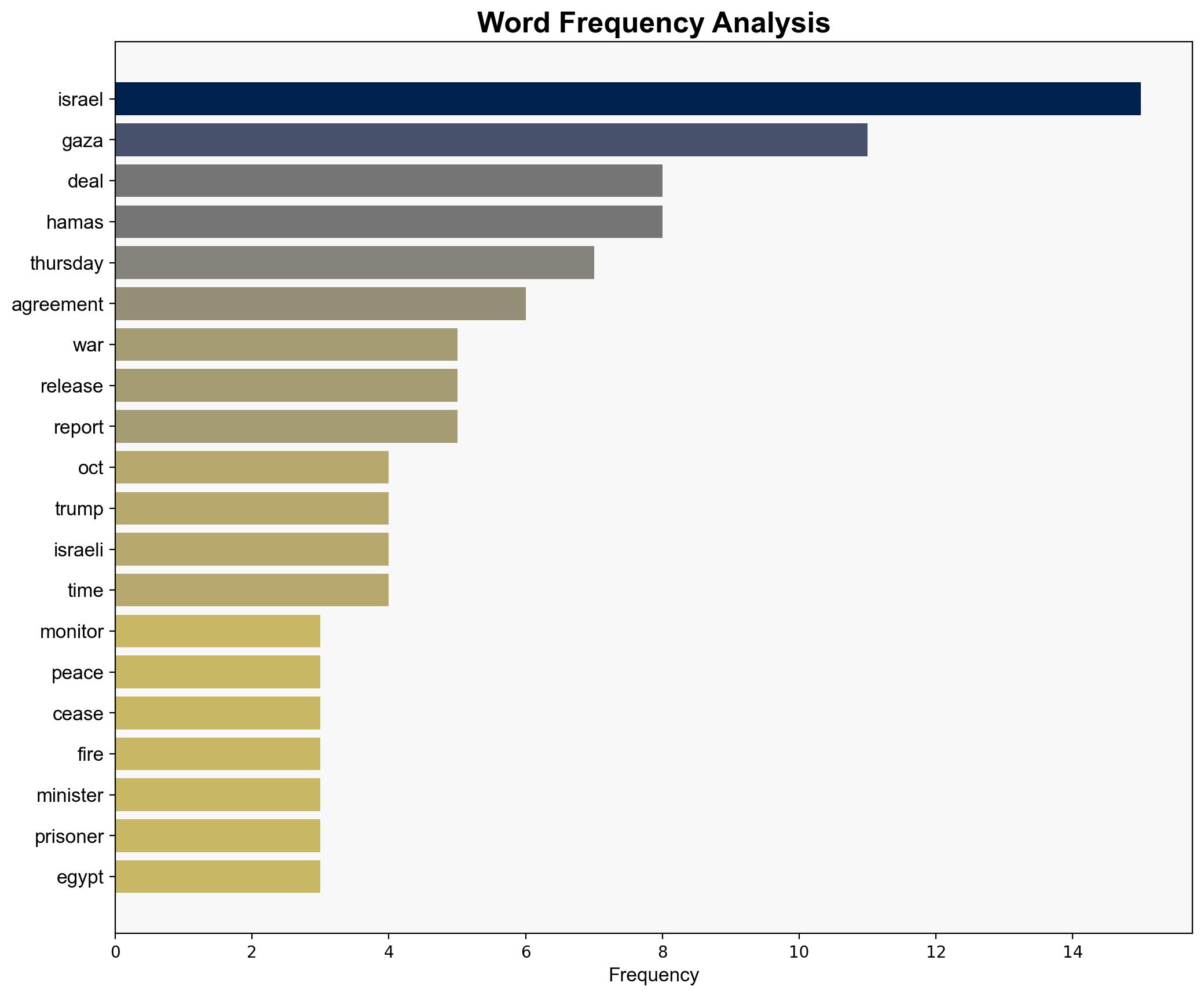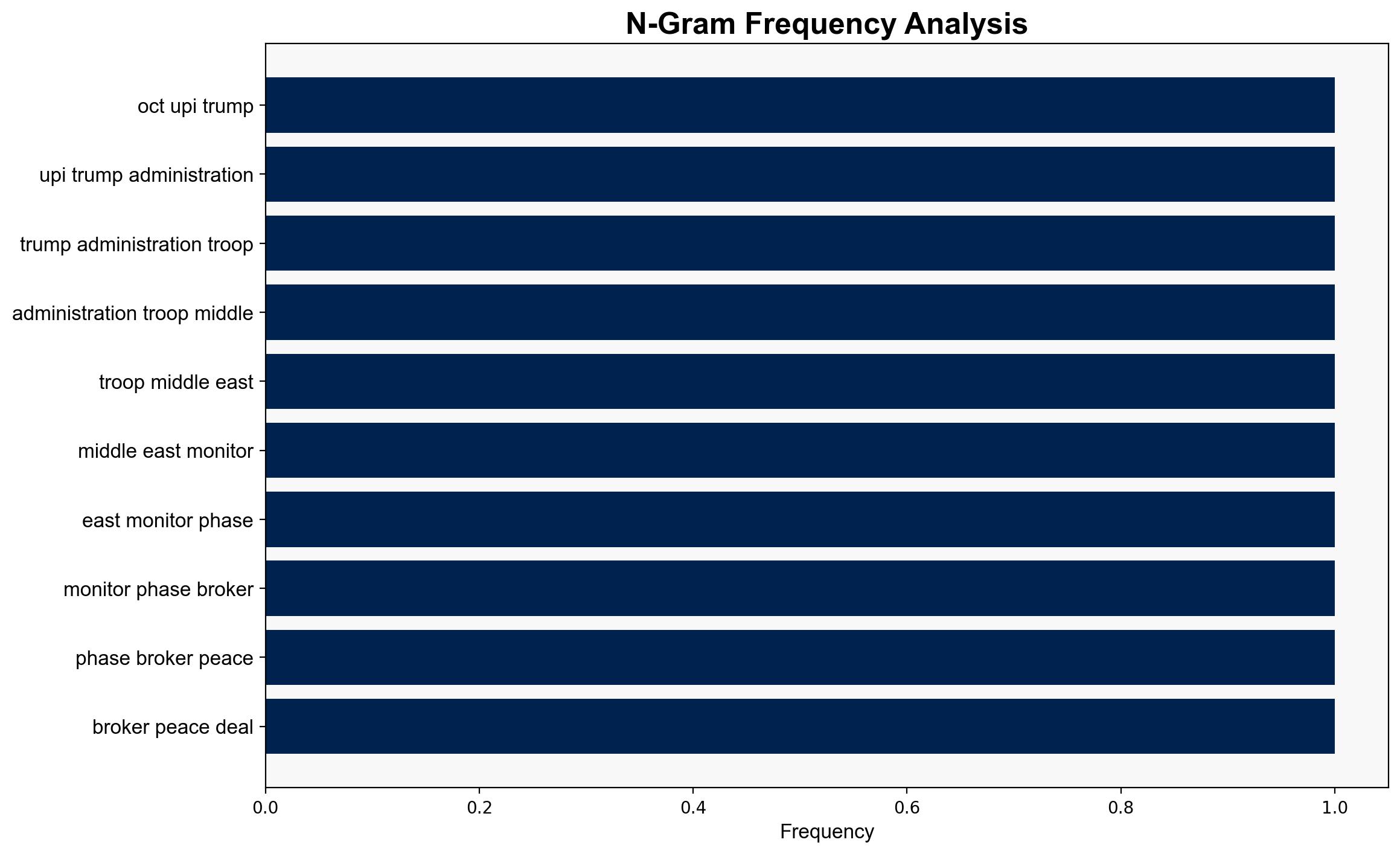US troops to monitor first phase of Gaza peace deal – UPI.com
Published on: 2025-10-10
Intelligence Report: US troops to monitor first phase of Gaza peace deal – UPI.com
1. BLUF (Bottom Line Up Front)
The most supported hypothesis is that the deployment of US troops to monitor the Gaza peace deal is primarily intended to stabilize the region and ensure compliance with the ceasefire agreement. This is assessed with moderate confidence due to the complexity and volatility of the situation. Recommended action includes diplomatic engagement with regional stakeholders to reinforce the peace process and monitor potential violations.
2. Competing Hypotheses
1. **Stabilization and Compliance Hypothesis**: The US troop deployment is aimed at ensuring the successful implementation of the ceasefire and facilitating humanitarian aid, thereby stabilizing the region.
2. **Strategic Influence Hypothesis**: The troop deployment is a strategic move by the US to increase its influence in the Middle East, potentially leveraging the situation to gain political and economic advantages.
Using ACH 2.0, the Stabilization and Compliance Hypothesis is better supported by the evidence, including the coordination with Israeli and Egyptian authorities and the focus on humanitarian aid. The Strategic Influence Hypothesis lacks direct supporting evidence and is primarily speculative.
3. Key Assumptions and Red Flags
– **Assumptions**: It is assumed that all parties involved are genuinely committed to the ceasefire and that US troops will be perceived as neutral facilitators.
– **Red Flags**: The lack of explicit details on the rules of engagement for US troops and the potential for misinterpretation of their presence by local populations or other regional actors.
– **Blind Spots**: The potential for internal dissent within Israel or Hamas that could undermine the peace process.
4. Implications and Strategic Risks
– **Geopolitical Risks**: The presence of US troops could be perceived as foreign intervention, potentially escalating tensions with regional powers like Iran.
– **Economic Risks**: Disruption in the region could impact global oil markets and trade routes.
– **Psychological Risks**: The local population may view the troop presence with suspicion, affecting the peace process’s legitimacy.
5. Recommendations and Outlook
- Engage in continuous diplomatic dialogue with regional stakeholders to support the peace process.
- Monitor troop deployment closely to ensure it aligns with humanitarian objectives.
- Scenario Projections:
- Best Case: Successful stabilization leads to long-term peace and regional cooperation.
- Worst Case: Misinterpretation of US intentions leads to regional escalation and conflict.
- Most Likely: Gradual stabilization with periodic setbacks due to internal and external pressures.
6. Key Individuals and Entities
– Donald Trump
– Benjamin Netanyahu
– Bezalel Smotrich
– Itamar Ben Gvir
– Abdel Fattah el-Sisi
– Osama Hamdan
7. Thematic Tags
national security threats, regional focus, peacekeeping, Middle East diplomacy




